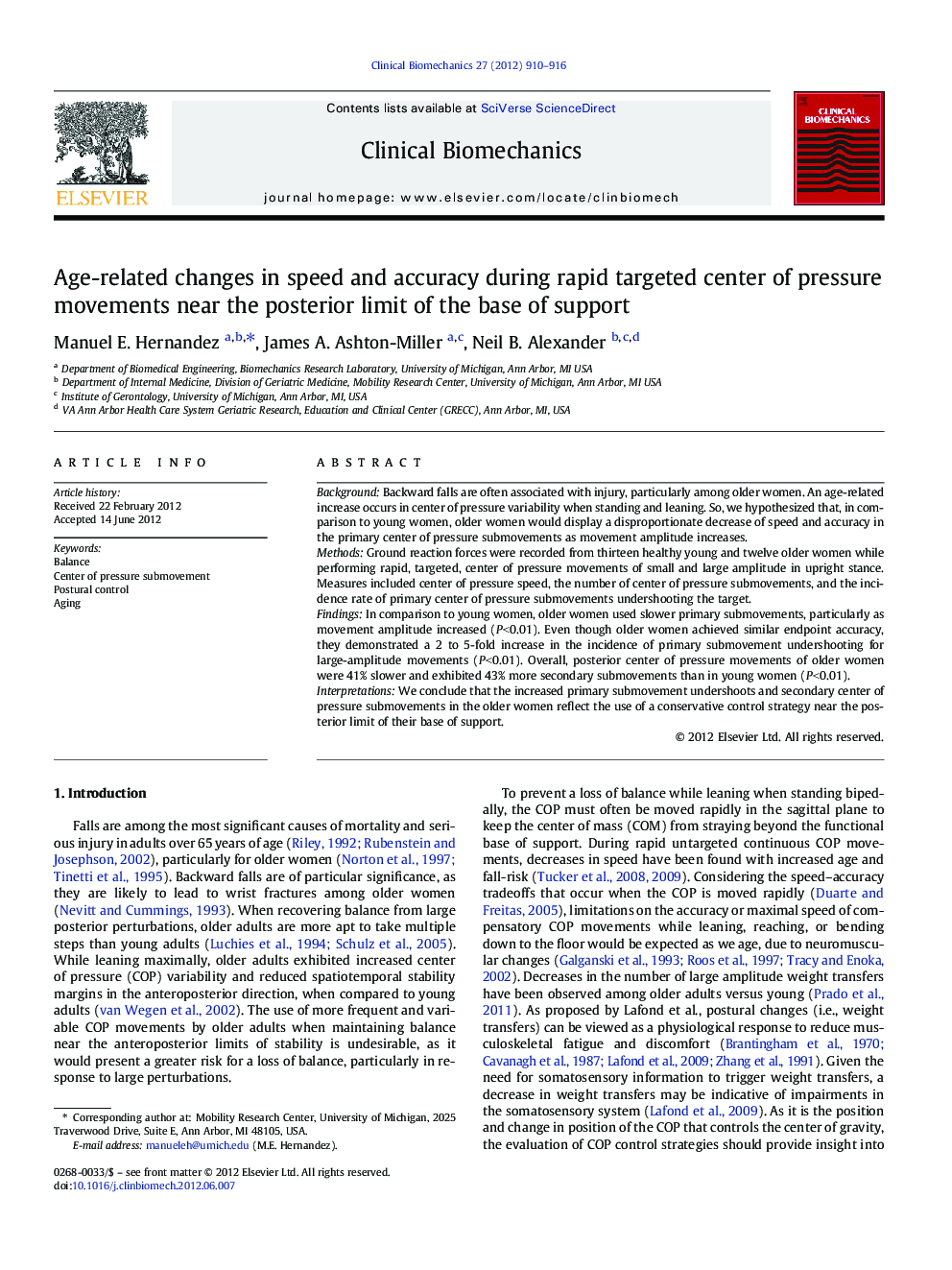| Article ID | Journal | Published Year | Pages | File Type |
|---|---|---|---|---|
| 6204986 | Clinical Biomechanics | 2012 | 7 Pages |
BackgroundBackward falls are often associated with injury, particularly among older women. An age-related increase occurs in center of pressure variability when standing and leaning. So, we hypothesized that, in comparison to young women, older women would display a disproportionate decrease of speed and accuracy in the primary center of pressure submovements as movement amplitude increases.MethodsGround reaction forces were recorded from thirteen healthy young and twelve older women while performing rapid, targeted, center of pressure movements of small and large amplitude in upright stance. Measures included center of pressure speed, the number of center of pressure submovements, and the incidence rate of primary center of pressure submovements undershooting the target.FindingsIn comparison to young women, older women used slower primary submovements, particularly as movement amplitude increased (PÂ <Â 0.01). Even though older women achieved similar endpoint accuracy, they demonstrated a 2 to 5-fold increase in the incidence of primary submovement undershooting for large-amplitude movements (PÂ <Â 0.01). Overall, posterior center of pressure movements of older women were 41% slower and exhibited 43% more secondary submovements than in young women (PÂ <Â 0.01).InterpretationsWe conclude that the increased primary submovement undershoots and secondary center of pressure submovements in the older women reflect the use of a conservative control strategy near the posterior limit of their base of support.
